#Moncalvo(Asti)
Text
GABRY PONTE - Monferrato On Stage - Moncalvo(Asti), Italy | 28 Jun, 2024.
Find out more / Get your Tickets Now.
0 notes
Text
Madrid Week 7: Viva Italia (not america..?)
Hola a todxs :). Niko back here again with week 7’s blog of my study abroad experience in Madrid! Like I mentioned in last week’s blog, this last weekend I traveled to Italy, and this past weekend I was in Sevilla, Spain. My trip to Italy was particularly transformative and jam packed with personal reflection. Read on for the reflection, stay for the photos (and Italian food p*rn). This blogpost probably took the longest for me to write, and was honestly pretty difficult for me to put in words. I hope I captured my thoughts well, and I always welcome feedback and discussion to any and all readers (at any point in time!).
Argentina (but aren’t we talking about Italy?)
As I’ve mentioned before, the summer after freshman year, I studied for 6 weeks in Buenos Aires, Argentina. One particular weekend, I took a trip to Iguazu Falls — the largest waterfall in the Americas by volume, and one of the 7 natural wonders of the world.

Long story short, I got onto a tour bus with a bunch of strangers from around the world, drove 15 hours across Argentina to get to the falls, randomly selected hostel room groups based on who was sitting nearby on the bus, and ended up in a group with 4 girls from Mexico, my travel buddy from the USA, and 1 girl from Italy.
We spent a wonderful weekend together seeing the waterfalls (barring a short-lived but intense spout of food poisoning after eating something funky at a Brazilian buffet), and formed the foundation of what could turn into lasting friendships. But, come Monday, we parted ways, not sure whether we would ever see each other again.
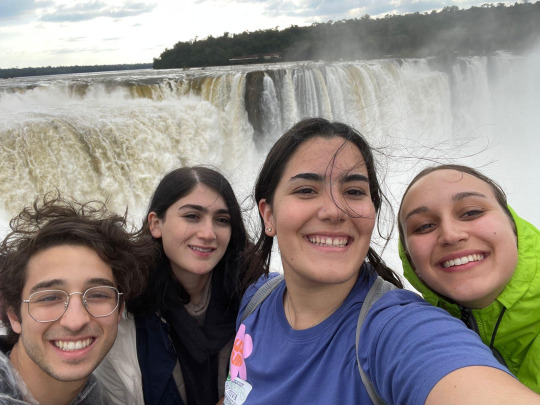

This trip was the first time I went into a travel situation without a true support system, and an important exercise in “trusting in the process” — and It helped me realize that I was capable of forming meaningful connections across language barriers, cultures, and in un-traditional social situations.
If it wasn’t obvious already, you might be able to see where this little backstory fits into my recent trip to Northern Italy. Before I departed for Spain in January, I sent a text to Gaia — the Italian friend I met in Iguazu — that I would be in Europe for the semester, and would love to see her at some point if the logistics work out.
Now we actually talk about Italy
Flash forward a few months, and well, the logistics worked out. Although our original plan was to go skiing in a small village in the Alps, we ended up being unable to due to weather issues. Instead, Gaia, her friend Camilla, and I took a tour of Northern Italy, visiting Turine, Asti, Moncalvo, and Milan.
In a way, this trip was an even bigger exercise in trust — although this time, it was my gut I was trusting, not the process. I hadn’t seen Gaia in nearly 2 years, and the only other time we had met lasted just 3 short days. I was about to spend another 3 days with her — but this time, nearly every waking moment would be spent together.
For some reason, the thoughts of “what if we didn’t get along?”, “what if it was awkward?”, “what if we got on each other’s nerves?” — normal things to think in this situation — never crossed my mind. I trusted my gut: that Gaia was someone that I got on with in the past, and I had a feeling that the people we grew into over the past two years would mesh just as well.
So, I didn’t worry. And I was right not to. After a short period of hesitancy, we clicked. We spent the weekend learning about each other — both from a personal and cultural point of view.
And by the end of this trip, I felt culturally enriched. There’s a level of cultural intimacy (is that a term? Well now it is, I just coined it) that can only be experienced by being someone who has lived and breathed that culture for their whole life — something that I feel like I’ve never had the pleasure of experiencing in my own heritage, first or second-hand.


A short aside on heritage in the USA
Ethnically, I am half Italian, half Greek. My great grandparents immigrated to the USA from the south of Italy through Ellis island, raising my grandmother, who gave birth to my mom. 4 generations later, I feel more comfortable calling myself Italian-American than Italian.
My mom’s side of the family was raised in northern New Jersey. I was raised Roman catholic, and I have 11 first cousins. Family gatherings are loud and boisterous, and people talk with their hands. My grandmother makes delicious Italian cookies called Pizzelles, and we call dish towels Mopinas (which isn’t even in the italian dictionary — it must have evolved on its own. Call it Englitalian [Italinglish? Coined.] ).

And that’s about all I’ve got to hold onto of Italian culture. Although I have more contact with Greece through the Orthodox Christian community and my direct-immigrant grandparents, I’ve never felt particularly connected to either culture. I don’t speak either language, and up until this past summer (when I visited Greece), I’d never been to either country.
People from the United States of America — especially, I think, those in the Northeast — place emphasis on their ethnic heritage that those from other countries around the world do not. Ask an American, and they’ll probably know where their blood comes from — if the records of their ancestor’s immigration do exist. Ask an Italian, or a Spaniard, and they probably will not. Odds are, in fact, that their blood will be just that: Italian, or Spanish.
The USA is a country built on immigrants, and it continues to be so to this day — and to me, it somehow feels wrong to not know anything about your cultural background.
This is a weirdly complex topic — one that I’ve thought about a lot —but bear with me here (and keep in mind, this is all from my personal point of view, and I welcome all new perspectives! Feel free to send me a message to discuss🙂). I think that, in the more liberal sphere of American adolescents, it’s almost “bad” to not know anything about your heritage — especially among white people, which is a label that I identify with. The USA has done a lot of messed up stuff in the world, and I think this is true to an extent that young Americans feel a desire to distance themselves from their nationality.
Instead, we grasp on to what we have that sets us apart from it — where our parents, grandparents, or great-grandparents come from. It gives us something to point to in conversations, something that lets us say “see, look, I’m not just a white-washed American, I’m cultured”, something to help us feel like we have more depth — especially in a country where everything feels like it comes from something else.
This is why I mentioned above that this is more common in the Northeast — although I can only truly speak on what I’ve experienced in Northern Virginia and in the University of Michigan. When I think of the term “melting pot”, I think of places like New York City. Southern states, and perhaps those in the West, have developed a culture that feels more unique, more distinctly American, and this is why (from my outside perspective) it seems like something more people feel proud of and claim as their own.
As I mentioned, this perspective comes from personal experience. And this is all something I’ve felt as a white American, at least 2 generations removed from my “mother countries”. After spending a weekend in Italy, I finally got a piece of that contact that I had always craved.
Italo-
Italian culture is just that — uniquely italian. Food, history, architecture, art — not only is it unique, but it is rich. From the first day that I spent with Gaia and Camilla, it was apparent that they felt a deep connection, pride, and understanding of their culture — and this is something that they graciously and enthusiastically shared with me.
I now have a greater — albeit limited — understanding of what it means to be Italian, in Italy. I learned about Italian espresso, when to have it (spoiler alert — any time of day is game), how to prepare it, and how it tastes. Some of my favorite moments of the trip were peacefully spent over the breakfast table in Gaia’s home, enjoying a light carb heavy breakfast and freshly brewed coffee.
We ate simple, delicious food at every restaurant we went to. The food was less extravagant than I expected it to be. Most of the meals were simple, with a focus on the ingredients and their preparation. Pastas, pizza, Milanese, Ragu, more pasta. Tiramisu, and gelato, too.
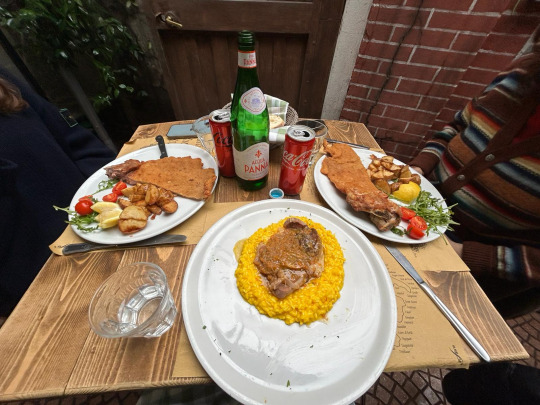


We had a night out — first to aperitivo, then to dinner, then to a bar that was built in an old desecrated church, then to a cheesy karaoke bar where the whole place was singing old Italian songs at the top of their lungs — with a group of 12 in Gaia’s hometown, which was made up of friends stemming from her high school days. The biggest difference between the Italian dinner party and an American one — we took our time. There was a feeling of ease at the table. Nothing was rushed. We enjoyed each dish, each glass of wine, and over everything, enjoyed each other’s company. The focus was on the people and the conversation, not on what was to be ordered and how fast it came out. I hope to bring this rhythm back to Ann Arbor with me (but that may be more difficult than I think. See footnote 1 below*).
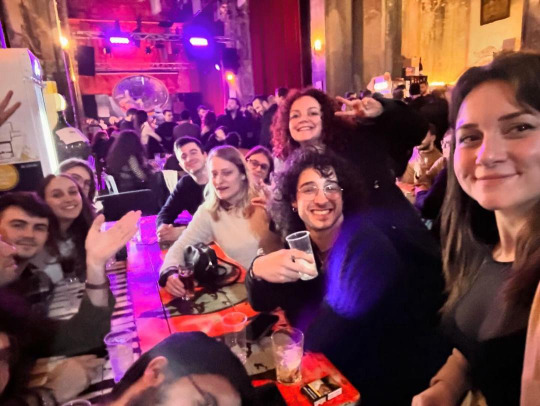
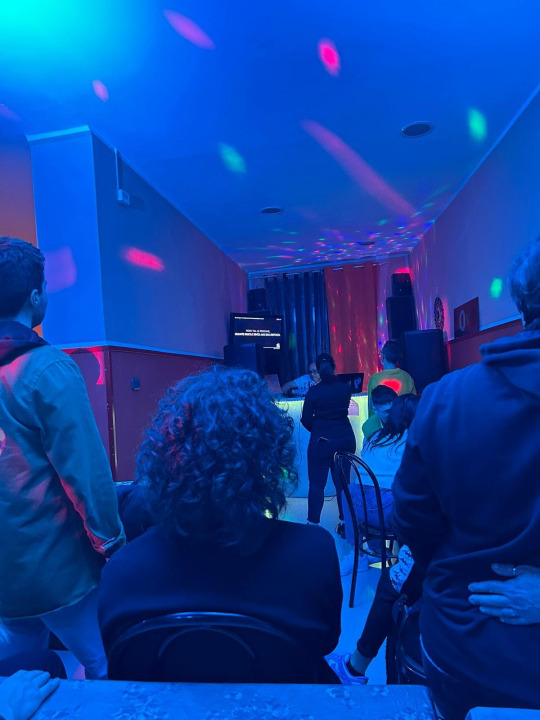
We explored multiple Italian cities, and walked a TON. I learned an interesting perspective of Milan (which was a beautiful city) from Camilla’s boyfriend — Milan is Italy to Europe, and Milan is Europe to Italy. (See footnote 2**). The architecture was beautiful, and after a rainstorm, Milan looked magical. The ground was sparkling, reflecting the dramatically lit buildings of the city center in the puddles that gathered on the ground. I saw the Italian countryside, picturesque rolling hills backdropped by an epic sunlit cumulo-nimbus cloud.
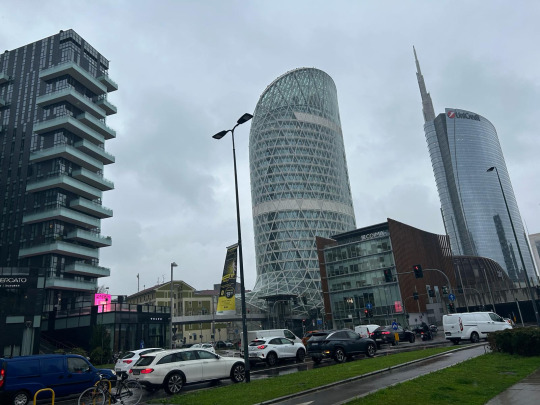
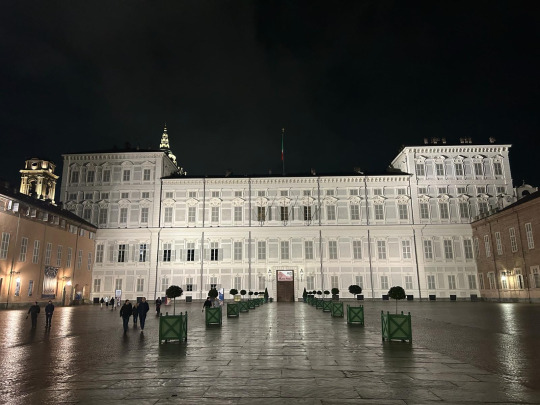
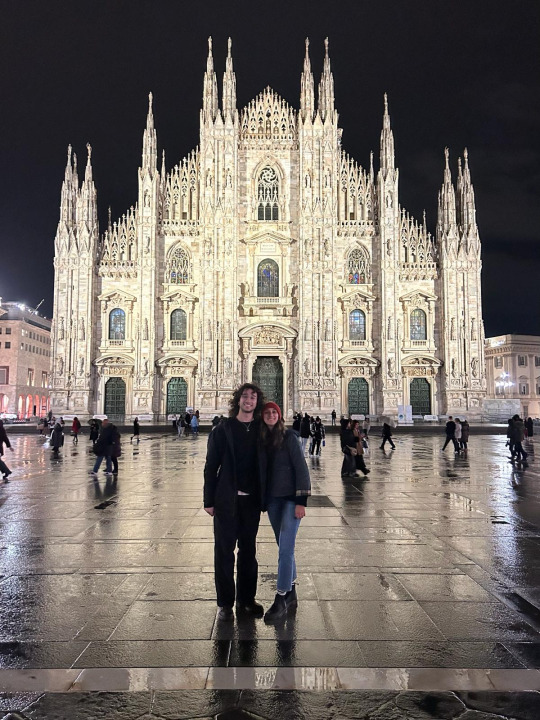

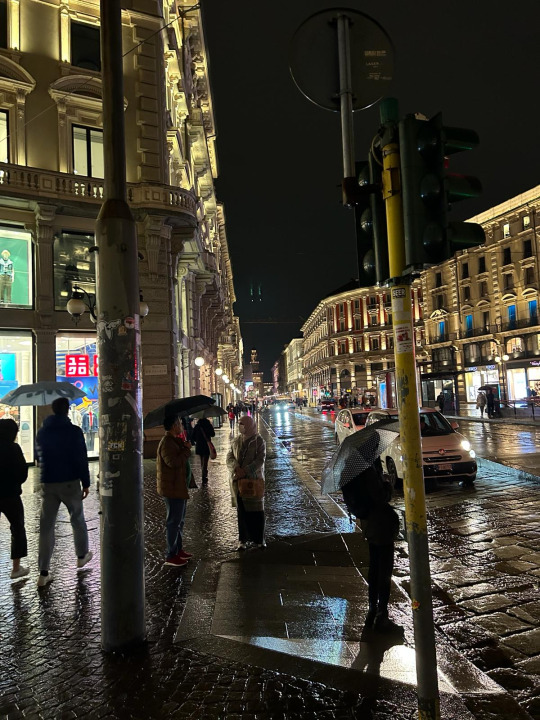
I even learned a base of the Italian language (I probably said “Come si dice” 100 times) that will serve me well if and when I want to learn it in the future — or if I ever get my Italian citizenship and decide to move there. Guess only time will tell.
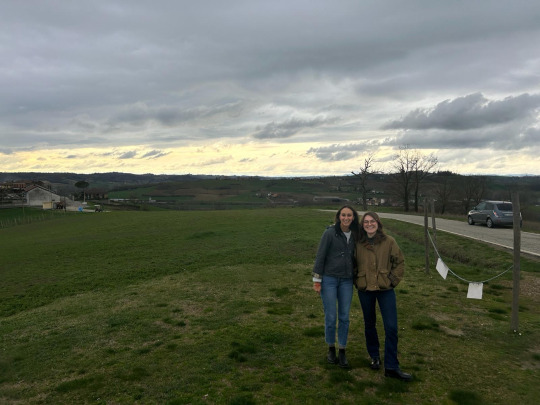

-americano
3 days is not a long period of time, but I can confidently say now that I understand a little better what it means to be Italian. I feel more connected to my cultural heritage — and in turn, I feel more connected than ever to my native culture in the USA.
It’s true that the USA has done a bunch of messed up stuff in the world. Imperialism, war crimes, political and economical extortion — the list goes on. But the longer I spend in Europe — the more I come into contact with different cultures, and understand foreign perspectives on the USA — the less these things feel like they’re inside a black box. Instead of avoiding these hard truths, I can face them head on — allowing me to acknowledge the bad and the good that comes with US culture.
A big critique I’ve heard abroad is that the United States has no culture of its own — but I don’t think that’s true. The USA is a place where global cultures collide, providing its citizens the opportunity to experience bits and pieces of the world and giving rise to unique elements born from this fusion.
Over the past 2 months, I’ve slowly shifted away from the feeling of shame that comes with being an American in Europe — and that’s thanks to a willingness to learn, adapt to, and accept cultures that I experience while I’m abroad (re: cultural humility, blogpost coming soon). Now, I’ll proudly say that I’m 50% Greek, 50% Italian, and 100% American. With my continuously evolving understanding of my individual parts (and all of the other cultures I come into contact with, especially Spain), I feel like I can better understand and contribute to that fusion, both in the melting pot of the United States, and as an international citizen in Europe — enriching the lives of myself and those I come into contact with.
Such is becoming “cultured” — a concept that has a bit of a pretentious connotation (IMO), but is worth striving for. I’ll be returning to Italy for spring break (Rome, Florence), so hopefully I’ll continue to develop this connection then. I also bookmarked in Google maps here all the places I visited in Italy this trip (and will do so in the next one) if you're considering taking a trip and want recommendations!
I planned on writing about Sevilla this week too, but I think this post has gone on long enough. I thoroughly enjoyed the different vibe it has from Spain, even through the rainy weather we experienced.
As always, check out the image descriptions for more details on each one. I hope everyone has a great rest of their week, and see you back here next soon!
Hasta luego,
Niko Economos
Aerospace Engineering
Universidad Carlos III de Madrid
Madrid, Spain
* In Italy, and the rest of Europe, servers get paid fair wages. In the USA, it’s not required, because it’s expected that servers will make up the difference in tips. I worked as a server for 2 summers, and made $3.50 an hour. The amount of money I made in a night was directly correlated to the number of tables I turned over. As a result, I did my best to get orders in fast, food out faster, and clear the table as quickly as I could so that I could make more money. Until this fact changes, I think it’s hard to have the same no-rush Italian experience over dinner unless you’re really conscious of it. Personally, if I’m not feeling pressure from a server to leave quickly, I’m likely feeling a sense of guilt for staying too long and reducing their nightly wage, no matter how well I tip. Maybe home cooked meals are the answer, which I’ll hopefully be well practiced with next semester :)
**To Europeans, they look at Milan and see what they think of Italy. The world capital of fashion, beautiful architecture, prosperous and well known city. Italians look at Milan and see what they think of as Europe —highly international, intercultural, and as a result more gentrified and expensive. I found this to be really interesting. Is there a US city that fits this bill?
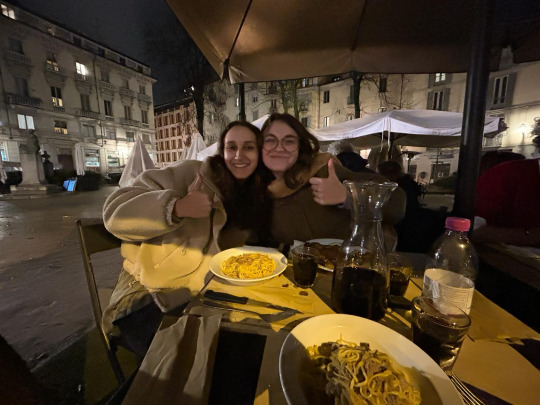
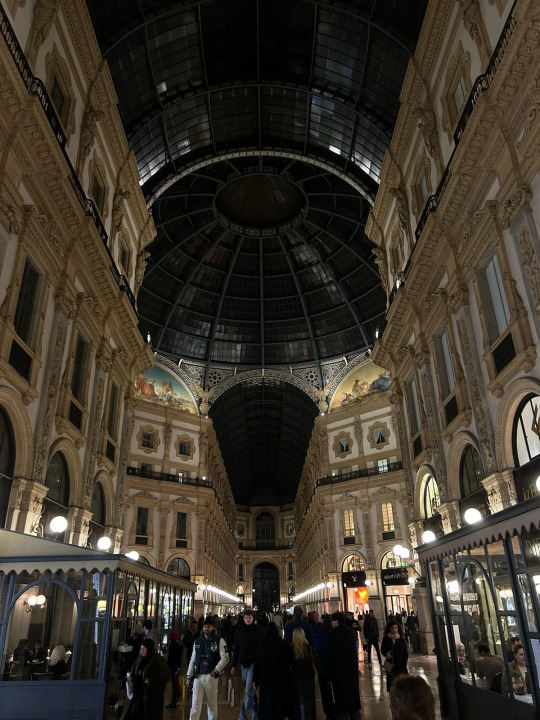
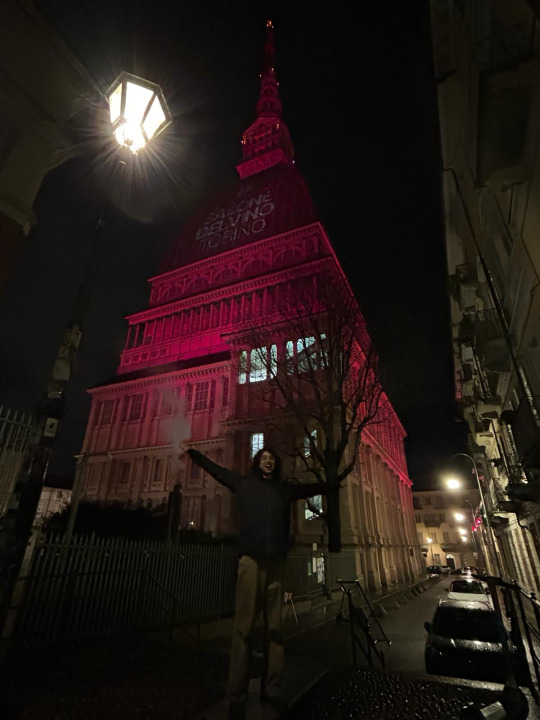
3 notes
·
View notes
Text
Il Rally Colli del Monferrato e del Moscato si terrà nel cuore della città di Asti il 3 e 4 agosto
🔴 🔴 Il Rally Colli del Monferrato e del Moscato si terrà nel cuore della città di Asti il 3 e 4 agosto
Inizia a delinearsi il format della nuova gara targata VM Motor Team e Race Motorsport Italia che nel weekend del 3 e 4 agosto segnerà il grande ritorno del Rally nel cuore della Città di Asti. Il Rally Colli del Monferrato e del Moscato, dopo numerose edizioni ospitate con successo e grande collaborazione da Moncalvo, nel 2024 troverà infatti una nuova sede ed entrerà in città proprio dalla…

View On WordPress
0 notes
Text
Ospedale di Asti, Broda alla direzione medica pro tempore
Roberta Broda ha assunto
temporaneamente la direzione medica del presidio ospedaliero
Cardinal Massaia di Asti. Subentra pro tempore Tiziana Ferraris,
che ricopre attualmente il ruolo di direttore sanitario
aziendale.
Broda, originaria di Moncalvo (Asti), ha iniziato la sua
carriera nell’ambito della direzione sanitaria ospedaliera
all’Asl To 5, nelle sedi di Moncalieri e Chieri, per…
View On WordPress
0 notes
Text
Fiera del Tartufo 2023 a Moncalvo Versiggia

Con la fine di ottobre torna il tradizionale appuntamento con la Fiera Nazionale del Tartufo nella piccola città di Moncalvo, tra le colline del Piemonte, infatti la 69° edizione si terrà nelle giornate del 22 e 29 ottobre 2023.
La manifestazione, da sempre il simbolo della Città Aleramica, parte da tradizioni storiche che risalgono al XIV secolo, quando il tartufo moncalvese era noto per essere l’Ambasciatore ufficiale delle terre monferrine presso tutte le Corti europee, infatti c’è una testimonianza in un documento conservato nell’Archivio Storico Comunale del 1594, una fattura di pagamento per il trasporto di: “un gallone, un agnello, una lonza e otto libbre di trifole (circa 4 kg) con seraci (forme di ricotta)”.
A Moncalvo nel 1594, i tartufi c’erano e una copia del prezioso documento è esposta nel Ristorante Barbetta di New York, che nel novembre 2000 ospitò una rappresentanza della Amministrazione comunale.
Di origine romana, Moncalvo divenne nel corso dei secoli di proprietà della Chiesa di Asti, della famiglia Graffagni, del Marchese del Monferrato, che ne fece la propria capitale, per poi passare al Marchese di Saluzzo nel 1306 e quindi nuovamente ai Paleologi di Monferrato nel 1309.
Il paese subì varie occupazioni straniere e divenne poi dominio dei Gonzaga di Mantova, i quali lo cedettero in feudo a diversi signori, nel 1604 a Galeazzo di Canossa, nel 1619 a Rolando Natta, nel 1671 a Filiberto Marchese di Ceva, e nel 1691 subì il saccheggio da parte delle truppe imperiali comandate da Eugenio di Savoia.
Moncalvo passò infine definitivamente alla Casa Savoia nel 1704 e con le Patenti del 9 agosto 1774 Vittorio Amedeo III la dichiarò Città, riconfermando il titolo attribuitole dal Duca di Mantova Ferdinando Carlo Gonzaga il 23 marzo 1705.
La città possiede le frazioni di Castellino-San Vincenzo, Patro, Santa Maria, Gessi e Stazione, ha uno stemma dai colori argento e rosso, uno scudo con lo corona a dodici perle, decorato con la scritta Montiscalvi Civitatis, con al di sopra due rami di palma.
Read the full article
0 notes
Text
Crema, inseguimento a Salvirola: gli autisti scappano, erano alla guida di auto rubate

Crema (Cremona), inseguimento a Salvirola: gli autisti scappano, erano alla guida di auto rubate.
La sera del 14 dicembre, dopo le 21.30, la centrale operativa ha informato le pattuglie della presenza di un’auto sospetta a Salvirola.
Da un controllo in banca dati della targa del mezzo, è risultata rubata in provincia di Asti. La pattuglia dei carabinieri di Crema si è quindi portata nella zona e poco dopo ha notato un’auto che sulla SP 20 andava da Salvirola in direzione di Fiesco e corrispondeva all’auto da ricercare, ovvero un’Alfa Romero Giulietta.
La fuga
L’auto si muoveva insieme ad un altro veicolo, un’Alfa Romeo Mito, e i due conducenti appena hanno notato che dietro di loro i carabinieri hanno cambiato direzione per seguirli, nel tentativo di scappare hanno svoltato in una strada laterale e si sono fermati. All’arrivo dei militari entrambe le auto sono fuggite a tutta velocità e hanno subito imboccato una strada sterrata di campagna.
Acquisito un po’ di vantaggio, i due conducenti hanno tirato il freno a mano, sono scesi dai mezzi e sono scappati di corsa nella vegetazione, riuscendo a far perdere le proprie tracce approfittando del buio.
Le due auto rubate
I militari hanno accertato che la Giulietta era stata rubata lo stesso giorno a Moncalvo (AT), mentre la Mito era stata poco prima rubata a Salvirola ai danni di un residente del posto. Forse i due autisti preparavano un furto perché si muovevano rapidamente con due auto rubate in provincia di Asti e a Salvirola. Ma sono stati intercettati dai carabinieri della Stazione di Crema. I militari hanno quindi proceduto al recupero di due veicoli e al termine di tutti gli accertamenti tecnici necessari sono stati contattati i proprietari per l’immediata restituzione.
Read the full article
0 notes
Photo

035 - DICCIONARIO DE ENOLOGÍA -
BARBARESCO. D.O.C.G. Vino tinto italiano, producido con cepas Nebbiolo de las tres variedades: michet, lampia y rosé en la región de Piamonte en los municipios de Barbaresco, Neive, Treiso y parte de la zona de San Rocco Senodelvio de Alba, en la provincia de Cuneo. Tiene como características un color: rojo granate con reflejos anaranjados, aroma: agradable e intenso, etéreo; evoca a la violeta, sabor: seco, pleno y robusto, armónico con tonos aterciopelados, contenido alcohólico: 12,5 – 13,5 grados, maridaje: asados de carne, caza de pluma, parrilladas y quesos curados. Ficha 2.
BARBARESCO. Apreciado vino italiano producido de la variedad de uva Nebbiolo. Es un vino tinto de bouquet característico y un precioso tono rojo rubí. Procede del Piamonte. Ficha 3.
BARBAROSSA. Uva tinta francesa.
BARBARROUX. Variedad de uvas tintas francesas con las que se produce la DO Provenza.
BARBERA D´ASTI. D.O.C. Vino tinto italiano, producido con cepas Barbera en la región de Piamonte, provincia de Asti, excluyendo el Monferrato, donde se produce el Barbera homónimo; las zonas más importantes son: Costiglione de Asti, Belveglio, Grana, Moncalvo, San Damione, Castagnole Lanze, Montegrosso, Agliano, Mombercelli, Vinchio, Canelli; se produce además en diversos municipios de la provincia de Alejandría. Tiene como características un color: rojo rubí intenso, cuando es joven, con tendencia al rojo granado con el envejecimiento, aroma: vinoso, evoca las guindas, sabor: seco, con cuerpo, sabroso y redondo, gentil y armónico, contenido alcohólico: 12 - 13 grados, maridaje: se adapta a cualquier tipo de comida, especialmente para asados, parrilladas, estofados y quesos.
BARBERA D'ALBA. D.O.C. Se obtiene en los alrededores de Alba mezclando otras uvas. Tinto limpio, con buen bouquet y fragante que mejora en 3-4 años. Alba produce el Barbero más lleno.
BARBERA D'ASTI. D.O.C. El mejor de los Barbera, elaborado sólo con uvas Barbera, oscuro, con sabor a uvas y apetitoso., más suave y afrutado. Envejece hasta los 7-8 años.
BARBERA DE ALBA. D.O.C. Vino tinto italiano, producido con cepas Barbera en la región de Piamonte, Alba y los municipios de Barolo, Barbaresco, Diano de Alba, Santo Stefano Belbo, Serralunga de Alba y Verduno, todos en la provincia de Cuneo. Tiene como características un color: rojo rubí cuando es joven y rojo amaranto con reflejos naranjas después del envejecimiento, aroma: vinoso intenso, pero delicado, sabor: con cuerpo, seco, con tendencia a amargo suave, pleno y armónico, contenido alcohólico: 11,5 - 13 grados, maridaje: acompaña muy bien a los asados, los quesos picantes, los platos típicos de la cocina de la zona de Alba basándose en carnes rojas, los guisados mixtos y la carne de caza.
BARBERA DEL MONFERRATO. D.O.C. De una amplia zona de la provincia de Allessandria y Asti. Agradable, ligeramente espumoso y a vees dulzón.
BARBERA DEL OLTREPÒ PAVESE. D.O.C. Vino tinto italiano, producido con cepas Barbera en un 90 a 100%, a veces se le añaden uva rara y croantina, hasta alcanzar un máximo del 10%; en la región de Lombardía, comprendiendo todo el Oltrep ò Pavese. Tiene como características un color: rubí intenso límpido y brillante, aroma: intenso, penetrante, evoca al regaliz y el bosque bajo, sabor: seco, a taninos, con cuerpo de persistencia media, contenido alcohólico: 11,5 – 12,5 grados, maridaje: vino adecuado para platos robustos y generosos, parrilladas, carnes rojas asadas, salchichas a la brasa, caza y quesos.
BARBERA GALLO. Vino tinto estadounidense, producido con cepas Barbera, en la región de San Joaquín, Valle Central, en los viñedos de Bodegas Gallo. Tiene como características un color: rojo intenso con tonalidades violáceas, aroma: afrutado, evoca las ciruelas, sabor: con cuerpo y vigoroso, con tendencia al abocado, contenido alcohólico: 12 – 13 grados, maridaje: vino de manjares robustos, a base de carnes, fiambres y salazones.
BARBERA. Después de la prestigiosa Nebbiolo, la Barbera es la principal cepa tinta del Piamonte (y la segunda variedad más plantada en Italia). iene un carácter herbáceo y afrutado, niveles de ácido relativamente altos y bajo en tanino y puede ser bebido joven o en un estilo más longevo, envejecido en rible o dejado en la botella para que mejore durante unos años, parecido de algún modo al Barolo. Uva negra muy oscura y usada también en Lombardía, Veneto, Friuli y otras provincias del Norte. Ficha 1.
BARBERA. Uva empleada para tintos de calidad, dotada de una buena acidez; muy extendida en Italia y en California. Ficha 2.
BARBERA. Uva negra originaria del Piamonte, Italia, con la que se elabora un vino tinto, sabroso y de mucho cuerpo. La Barbera d´Asti es parecida a la variedad Bonarda. La Barbera se utiliza para cortes. Ficha 3. [email protected] - Enólogo
1 note
·
View note
Text
Barbera d'Asti
Barbera d'Asti

Il vino Barbera d’Asti:
vino rosso pregiato dalla regione Piemonte.
La regione Piemonte ha sempre esportato, nel corso della sua tradizione vinicola, vini di qualità ed il vino Barbera d’Asti DOC risulta essere sicuramente un fulgido esempio di vino rosso proveniente da queste zone della penisola.
E’ attraverso l’uso di uve Barbera ed eventuali aggiunte di Freisa, Grignolino e Dolcetto che viene realizzato il Barbera d’Asti, viti coltivate nei comuni di Asti, Alessandria, Castiglione d’Asti, Belveglio, Grana, Moncalvo, San Damiano, Castagnole Lanze, Montegrosso, Agliano, Mombercelli e Vinchio che si trasformano in un vino caratteristico e inimitabile.
Caratteristiche organolettiche del vino Barbera d’Asti.
E’ attraverso l’olfatto, il gusto e la vista che emergono tutte le proprietà tipiche di un vino pregiato; infatti la degustazione di un vino DOC passa attraverso l’analisi sensoriale.
Il vino Barbera d’Asti appare ai nostri occhi avente colore rosso rubino che tende al granata con l’invecchiamento il quale delizia lo sguardo e consegue dalla selezione dei vitigni che lo compongono. Al naso il vino Barbera d’Asti si rivela vinoso con note di viola, contemporaneamente assaporandolo si evidenzia risulta essere un sapore sapido, pieno, asciutto e corposo.
Come abbinare a tavola il Vino Barbera d’Asti.
Risulta consigliabile mettere in tavola il vino Barbera d’Asti ad una temperatura di servizio di circa 16-18 gradi con salumi, bolliti, carni bianche, maiale e selvaggina.
un nuovo post è stato publicato su https://online-wine-shop.com/tutti-i-vini/vini-rossi/barbera-dasti/
0 notes
Text
Barbera d'Asti
Barbera d'Asti

Il vino Barbera d’Asti:
vino rosso pregiato dalla regione Piemonte.
La regione Piemonte ha sempre esportato, nel corso della sua tradizione vinicola, vini di qualità ed il vino Barbera d’Asti DOC risulta essere sicuramente un fulgido esempio di vino rosso proveniente da queste zone della penisola.
E’ attraverso l’uso di uve Barbera ed eventuali aggiunte di Freisa, Grignolino e Dolcetto che viene realizzato il Barbera d’Asti, viti coltivate nei comuni di Asti, Alessandria, Castiglione d’Asti, Belveglio, Grana, Moncalvo, San Damiano, Castagnole Lanze, Montegrosso, Agliano, Mombercelli e Vinchio che si trasformano in un vino caratteristico e inimitabile.
Caratteristiche organolettiche del vino Barbera d’Asti.
E’ attraverso l’olfatto, il gusto e la vista che emergono tutte le proprietà tipiche di un vino pregiato; infatti la degustazione di un vino DOC passa attraverso l’analisi sensoriale.
Il vino Barbera d’Asti appare ai nostri occhi avente colore rosso rubino che tende al granata con l’invecchiamento il quale delizia lo sguardo e consegue dalla selezione dei vitigni che lo compongono. Al naso il vino Barbera d’Asti si rivela vinoso con note di viola, contemporaneamente assaporandolo si evidenzia risulta essere un sapore sapido, pieno, asciutto e corposo.
Come abbinare a tavola il Vino Barbera d’Asti.
Risulta consigliabile mettere in tavola il vino Barbera d’Asti ad una temperatura di servizio di circa 16-18 gradi con salumi, bolliti, carni bianche, maiale e selvaggina.
leggi tutto https://online-wine-shop.com/tutti-i-vini/vini-rossi/barbera-dasti/
0 notes
Text
Barbera d'Asti
Barbera d'Asti

Il vino Barbera d’Asti:
vino rosso pregiato dalla regione Piemonte.
La regione Piemonte ha sempre esportato, nel corso della sua tradizione vinicola, vini di qualità ed il vino Barbera d’Asti DOC risulta essere sicuramente un fulgido esempio di vino rosso proveniente da queste zone della penisola.
E’ attraverso l’uso di uve Barbera ed eventuali aggiunte di Freisa, Grignolino e Dolcetto che viene realizzato il Barbera d’Asti, viti coltivate nei comuni di Asti, Alessandria, Castiglione d’Asti, Belveglio, Grana, Moncalvo, San Damiano, Castagnole Lanze, Montegrosso, Agliano, Mombercelli e Vinchio che si trasformano in un vino caratteristico e inimitabile.
Caratteristiche organolettiche del vino Barbera d’Asti.
E’ attraverso l’olfatto, il gusto e la vista che emergono tutte le proprietà tipiche di un vino pregiato; infatti la degustazione di un vino DOC passa attraverso l’analisi sensoriale.
Il vino Barbera d’Asti appare ai nostri occhi avente colore rosso rubino che tende al granata con l’invecchiamento il quale delizia lo sguardo e consegue dalla selezione dei vitigni che lo compongono. Al naso il vino Barbera d’Asti si rivela vinoso con note di viola, contemporaneamente assaporandolo si evidenzia risulta essere un sapore sapido, pieno, asciutto e corposo.
Come abbinare a tavola il Vino Barbera d’Asti.
Risulta consigliabile mettere in tavola il vino Barbera d’Asti ad una temperatura di servizio di circa 16-18 gradi con salumi, bolliti, carni bianche, maiale e selvaggina.
un nuovo post è stato publicato su https://online-wine-shop.com/tutti-i-vini/vini-rossi/barbera-dasti/
0 notes
Text
GABRY PONTE - Monferrato On Stage - Moncalvo(Asti), Italy | 28 Jun, 2024.
Find out more / Get Tickets here.
0 notes
Text
Barbera d'Asti
Barbera d'Asti

Il vino Barbera d’Asti:
vino rosso pregiato dalla regione Piemonte.
La regione Piemonte ha sempre esportato, nel corso della sua tradizione vinicola, vini di qualità ed il vino Barbera d’Asti DOC risulta essere sicuramente un fulgido esempio di vino rosso proveniente da queste zone della penisola.
E’ attraverso l’uso di uve Barbera ed eventuali aggiunte di Freisa, Grignolino e Dolcetto che viene realizzato il Barbera d’Asti, viti coltivate nei comuni di Asti, Alessandria, Castiglione d’Asti, Belveglio, Grana, Moncalvo, San Damiano, Castagnole Lanze, Montegrosso, Agliano, Mombercelli e Vinchio che si trasformano in un vino caratteristico e inimitabile.
Caratteristiche organolettiche del vino Barbera d’Asti.
E’ attraverso l’olfatto, il gusto e la vista che emergono tutte le proprietà tipiche di un vino pregiato; infatti la degustazione di un vino DOC passa attraverso l’analisi sensoriale.
Il vino Barbera d’Asti appare ai nostri occhi avente colore rosso rubino che tende al granata con l’invecchiamento il quale delizia lo sguardo e consegue dalla selezione dei vitigni che lo compongono. Al naso il vino Barbera d’Asti si rivela vinoso con note di viola, contemporaneamente assaporandolo si evidenzia risulta essere un sapore sapido, pieno, asciutto e corposo.
Come abbinare a tavola il Vino Barbera d’Asti.
Risulta consigliabile mettere in tavola il vino Barbera d’Asti ad una temperatura di servizio di circa 16-18 gradi con salumi, bolliti, carni bianche, maiale e selvaggina.
https://online-wine-shop.com/tutti-i-vini/vini-rossi/barbera-dasti/
0 notes
Text
Barbera d'Asti
Barbera d'Asti

Il vino Barbera d’Asti:
vino rosso pregiato dalla regione Piemonte.
La regione Piemonte ha sempre esportato, nel corso della sua tradizione vinicola, vini di qualità ed il vino Barbera d’Asti DOC risulta essere sicuramente un fulgido esempio di vino rosso proveniente da queste zone della penisola.
E’ attraverso l’uso di uve Barbera ed eventuali aggiunte di Freisa, Grignolino e Dolcetto che viene realizzato il Barbera d’Asti, viti coltivate nei comuni di Asti, Alessandria, Castiglione d’Asti, Belveglio, Grana, Moncalvo, San Damiano, Castagnole Lanze, Montegrosso, Agliano, Mombercelli e Vinchio che si trasformano in un vino caratteristico e inimitabile.
Caratteristiche organolettiche del vino Barbera d’Asti.
E’ attraverso l’olfatto, il gusto e la vista che emergono tutte le proprietà tipiche di un vino pregiato; infatti la degustazione di un vino DOC passa attraverso l’analisi sensoriale.
Il vino Barbera d’Asti appare ai nostri occhi avente colore rosso rubino che tende al granata con l’invecchiamento il quale delizia lo sguardo e consegue dalla selezione dei vitigni che lo compongono. Al naso il vino Barbera d’Asti si rivela vinoso con note di viola, contemporaneamente assaporandolo si evidenzia risulta essere un sapore sapido, pieno, asciutto e corposo.
Come abbinare a tavola il Vino Barbera d’Asti.
Risulta consigliabile mettere in tavola il vino Barbera d’Asti ad una temperatura di servizio di circa 16-18 gradi con salumi, bolliti, carni bianche, maiale e selvaggina.
un nuovo post è stato publicato su https://online-wine-shop.com/tutti-i-vini/vini-rossi/barbera-dasti/
0 notes
Text
Moncalvo in Danza, giovani promesse e docenti di grido
Special guest Eleonora Abbagnato
(ANSA) – ASTI, 07 LUG – Nuova edizione di “Moncalvo in
Danza”, rassegna artistica nell’Astigiano. Fino al 9 luglio
Moncalvo (Asti) si trasforma nel “buen retiro” delle giovani
promesse della danza nonché nel ritrovo collinare di numerosi
docenti di fama internazionale che qui tengono le proprie
masterclass. Ad accogliere le attività sono le sale di
Orsolina28,…
View On WordPress
0 notes
Text
Fiera del bue grasso 2021 a Moncalvo
Fiera del bue grasso 2021 a Moncalvo
Dal 5 al 12 dicembre a Moncalvo, in provincia di Asti, torna la Fiera del Bue Grasso e Sagra del Bollito che quest’anno giunge alla sua 384° edizione.
Si tratta di una grande rassegna zootecnica con l’eccellenza della Razza Bovina Piemontese, dai fassoni, ai manzi, fino ai celebri giganti bianchi, che sfila nella piazza centrale della cittadina.
(more…)

View On WordPress
0 notes
Text
Violento temporale nella notte, numerosi interventi dei Vigili del Fuoco
Violento temporale nella notte, numerosi interventi dei Vigili del Fuoco
<!-- -->
I Vigili del Fuoco di Asti sono stati impegnati per numerosi interventi a seguito del violento nubifragio che si è scatenato durante la notte.
La parte più colpita della provincia è stata a nord, nell’area tra i Comuni di Grazzano Badoglio, Casorzo, Moncalvo e Calliano: numerosi gli alberi caduti sulle strade a seguito del forte vento, gli interventi si sono resi necessari per…
View On WordPress
1 note
·
View note